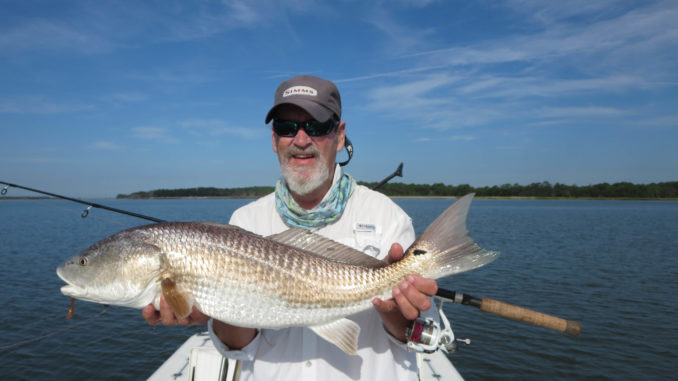
Redfish are reliable targets for Beaufort-area anglers as summer approaches
Last year’s cobia season, which has been the main focus of fishing action during May and June on the Broad River near Beaufort, was a bust. Last year, the fish just weren’t there, so far fewer boats were anchored, dangling chum bags over baited rigs or slowly cruising the river looking for the brown beasts floating by on the surface.
Fishermen were discouraged, and even the most-experienced anglers and professional guides gave up in frustration. What happened is not certain, but biologists believe overharvest was a problem and are encouraging voluntary reductions in the harvest to protect the fishery.
Fishermen love to go fishing, but few of us enjoy beating our heads against brick walls. We hope the cobia return in numbers to the Broad, but if they don’t — and even if they do — it’s nice to have an alternative. Spot-tail bass, aka redfish, are the answer.
Spot-tails are schooling fish that feed aggressively on low-tide flats and now, with warmer water, are venturing into the high-water grass chasing fiddler crabs. Along with speckled trout, they are also feeding around grass edges and oyster bars as the changing tide moves water onto and off of these transitional areas. The fish aren’t everywhere, but they can be anywhere.
There are certainly other methods that work, but here are five good ways to catch redfish:
• Pole or drift around low-tide flats;
• Pole or kayak around high-tide shallows;
• Wade into high-tide flats;
• Float bait on corks along edges during rising or falling water;
• Cast baits on cork rigs into grass openings on high water.
Most seasoned light-tackle fishermen know how to catch spot-tails during low-tide periods when schools drift around shallow tidal flats. Sight-casting is the name of this game when the falling tide drains the water from the spartina marsh grass and forces all swimming creatures into the tidal creeks or shallow mud flats. The redfish will maraud in schools. Look for signs like V-shaped wakes or nervous water signaling redfish schools chasing food. Sometimes, you’ll even see feeding frenzies that are very obvious.
Capt. Tuck Scott, head guide at Bay Street Outfitters in Beaufort, knows that low-tide redfishing is a combination of hunting and fishing because most of the time you cast to fish you have spotted. Scott suggests two techniques for working to a spotted school of fish. Casting in front and well beyond the fish and reeling the lure back at a constant, slow speed works well. The other option is the “drop-and-wait” where you cast several feet in front of the school and let the lure sit on the bottom until the fish reach it. A little jigging action when the fish swim near will get you hooked up. Be careful to cast to the edges of schools rather than over them so you can catch several fish before they spook.
Many of his charters cast flies, but for spin fishermen, Scott likes, in the new penny color, a Strike King Redfish Magic, which is like a freshwater spinnerbait, or a 3-inch D.O.A. shrimp, in addition to the traditional leadhead jig and scented trailer like the Gulp shrimp or jerk shad.
If fish are not showing themselves, blind-casting into low-tide pools or near the outside of creek mouths and dredging the deeper water with the same lures often works. Use a slow retrieve that bumps a jig along sandy bottom areas and a slightly faster retrieve if oysters are present. With the spinnerbait, a constant, slow retrieve is fine since they rarely get hung up on obstructions.
High-tide flats appeal to anglers with and without boats. A venue for fly-fishing anglers and light-tackle spincasters, flooded, hard-bottomed flats, teeming with fiddler crabs and other small baits, offer the excitement of stalking your prey along with the thrill of the strike. Angler John Holbrook of Beaufort is a fly-casting and fly-tying instructor at Bay Street and one of the local experts on the fine points of wading for redfish.
Wadable flats that attract redfish are fairly recognizable. Holbrook said a good wading flat has a hard bottom, short spartina grass, two or more entry or exit spots where fish can filter in, access to deeper water and lots of fiddler crabs. Redfish move onto these flats during the warm months when the height of the tide measured at the mouth of the Savannah River is 7.5 feet or more. Tide heights vary greatly throughout the Lowcountry, but referencing a published Savannah tide height above 7.5 feet tells you there will be enough water on your local flats.
Once you have identified a likely flat, Holbrook suggests watching how the water comes in a couple hours before high tide. As the water floods into the intermediate weed line, which is the area of medium-height spartina grass and soft mud bordering the hardbottom flat, look for little channels forming. These are the likely paths the fish will use entering and leaving the flat.
There are few more beautiful or exciting fishing sights than a waving, spotted tail glistening in the sunlight, but if you only look for tails, you will miss most of the arriving fish. Subtle signs like V-shaped wakes, called pushes, fleeing or popping small fish or shrimp, and nervous water are signs of activity.
“Don’t forget to keep looking behind you for fish that sneak by,” Holbrook said.
Once you see fish, cast well ahead of the cruising ones or very close to tailing fish and then move your fly, jig or bait very little. When a fish hovers over your lure, Holbrook said, “Do nothing until he eats it and turns away as any aggressive movement will spook the fish.”
Holbrook generally fishes with fly-fishing tackle and often opts for his version of the LC Shrimp fly, but most crab and shrimp patterns work well, as do spoonflies and baitfish imitations. All flies for high-tide flats need to be weedless.
Spin fishermen can thread live bait or a 1-inch Gulp molting peeler crab onto a 1/0 Gamakatsu circle hook with two medium split shots up the line. Using a circle hook avoids gut-hooking the feeding redfish, which will certainly swallow a scented bait. Cast about 6 feet beyond the feeding fish and very slowly crank it to them. Bait fishermen can also lip-hook minnows on a Johnson spoon, use a Carolina-rigged mud minnow or a cork rig with shrimp or minnows.
Most everything you can do on a high-tide, walk-in flat, you can do with a kayak, plus, you can cover much more water. Fish from them directly or just use them to expand your opportunities. Launch near a prime high-tide flat, paddle around looking for fish signs, then anchor the boat and stalk the fish. If you spook the fish or the flat is empty, simply hop in and paddle to another area, even across deep creeks or broad expanses of tall spartina and pluff mud that a walking angler cannot pass. A couple of precautions: tether your paddle to the kayak with a string in case it gets blown out while you are not looking and have an anchor.
Over the past few years, poling flats boats into high-tide shallow water, looking for tailing and cruising redfish has become much more popular with local guides and enthusiasts. Instead of just fishing low-tide flats and going home when the water gets too deep, guides work the transition water and on the big tides even venture onto wading flats with their boats. Beginning when the tide floods the tall grass, Scott moves in, quietly looking for moving grass, tails, dorsal fins, jumping shrimp or minnows and even belly flashes. Weedless crab flies are the ticket for fly anglers, with a weedless jig and Gulp! peeler crab or a Red Ripper spoon good for the spin casters. Casting a couple feet beyond spotted fish and a very slow retrieve is suggested.
When the water gets too deep to see tails, Tuck often moves to white, sand bottoms looking for cruising reds. It is possible to fish in high water when the tide starts going out but be careful or you’ll be stuck for a very long time.
Fishing mid-tide transitions and high-tide grass are venues favored by bait fisherman and guides like Capt. Dan Utley, a popular guide in the Hilton Head. Mid-tide transition areas along flooded grass banks, oyster banks and points are great places to float a bait on a cork. Baitfish, shrimp and crabs congregate in these safer havens while redfish often cruise nearby. In this situation, floating a bait suspended just above the bottom on a cork rig covers lots of water. Utley normally anchors in likely spots and repeatedly casts upcurrent to float the cork down, but you can also drift along with the moving tide to cover an entire shoreline. His bait of choice here is a mud minnow, cut mullet or crab.
Utley also likes to have his clients float baits under a cork in high-water pockets in the grass, areas he calls “mud holes.” On a recent charter, he inched his boat into shallow water within casting range of several pockets, threaded a cut portion of a legal blue crab onto a 2/0 Kahle hook and had each client float their bait in a separate piece of water. The scent of the cut crab would attract any redfish in the vicinity.
Unless there is a huge bounce back in the Broad River cobia population this year, most of us anglers will be looking for “other fish to fry.” Redfish are there waiting for you.
DESTINATION INFORMATION
HOW TO GET THERE — I-95, US 17 and US 21 will get fishermen to the Beaufort area from most spots in South Carolina. Once there, anglers working the Broad River and surrounding waters often use the excellent landing on SC 170 at the Chechessee River Bridge or the landing at the base of the Broad River bridge, both about halfway between Bluffton and Beaufort. Many other free public landing options are available.
WHEN TO GO — Reds get cranked up in late spring and will be active through the fall, usually in many of the same areas.
FISHING INFO/GUIDES — Bay Street Outfitters, Beaufort, 843-524-5250; Grayco Hardware, Lady’s Island, 843-521-8060; Beaufort Boat and Dock Supply, Port Royal, 843-986-0552; Capt. Tuck Scott, 843-271-5406; Capt. Owen Plair, 843-524-5250; Capt. Doug Gertis, 843-521-9896; Capt. Dan Utley 843-368-2126, Capt. Jack Brown, 843-838-9369; Capt. Richard Sykes, 843-524-5250. See also Guides and Charters in Classifieds.
ACCOMMODATIONS — Beaufort Area Chamber of Commerce, 843-986-5400.
MAPS — Top Spot Weatherproof map N233 is available from local tackle shops; Waterproof Charts, 93F, Hilton Head/Beaufort, 800-423-9026, www.waterproofcharts.com.

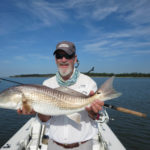
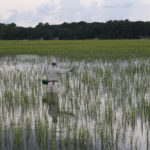
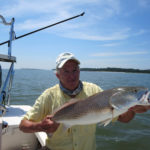
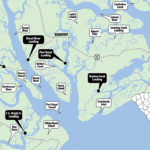



Be the first to comment